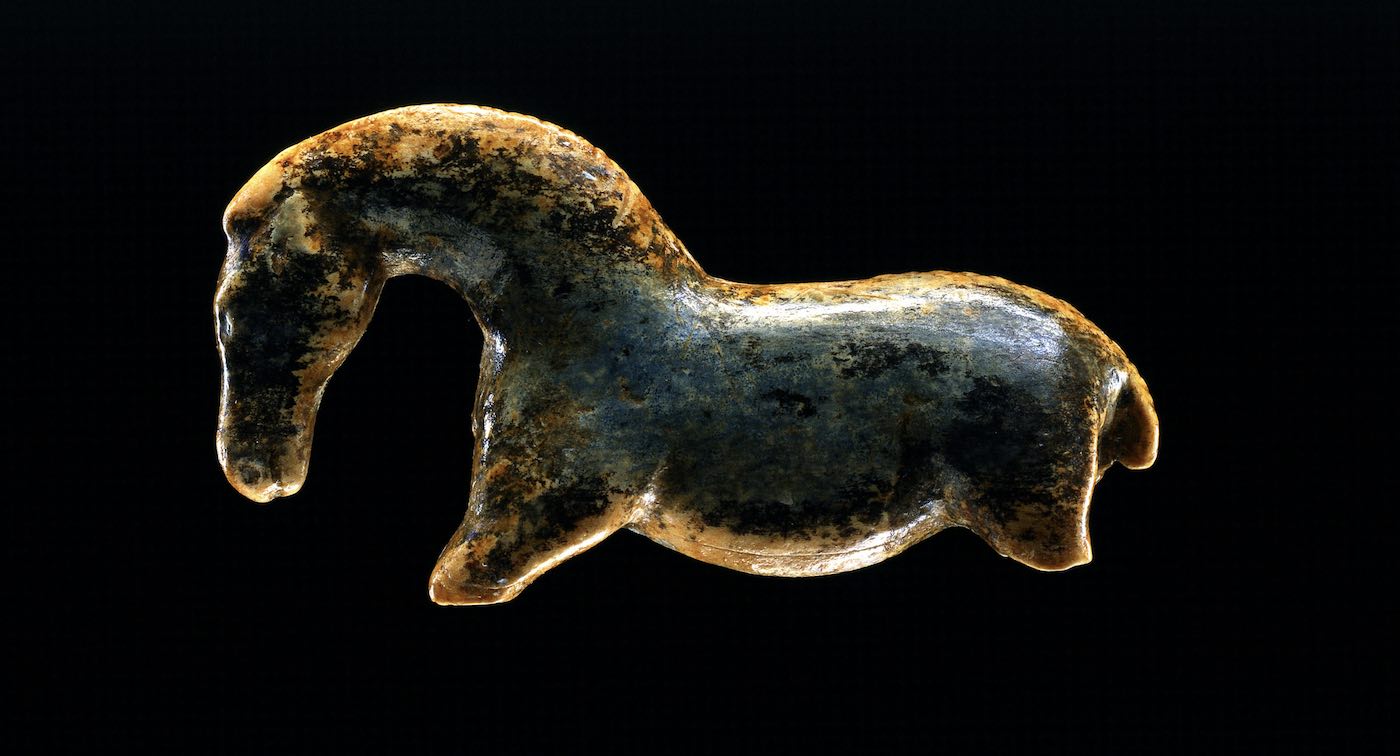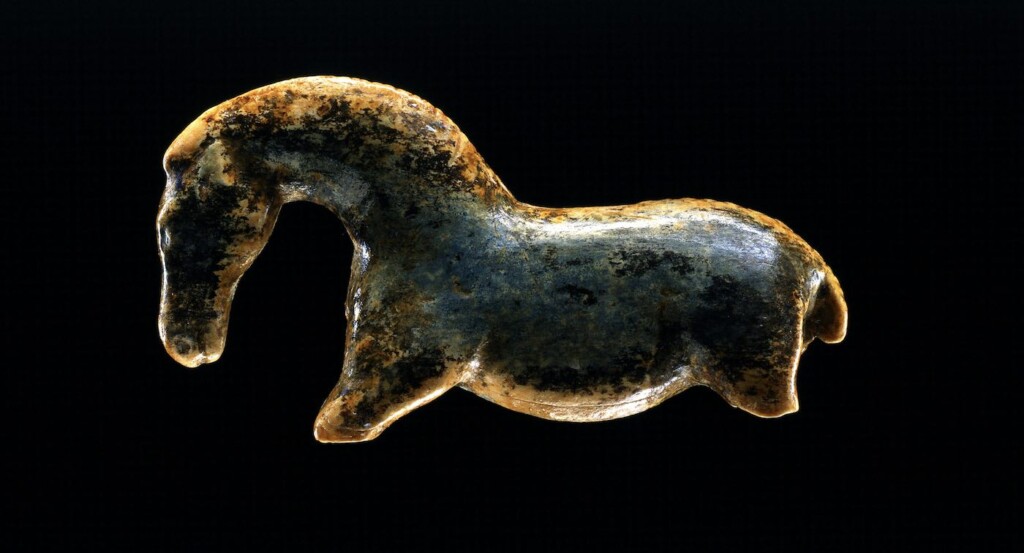
This is the first depiction of a horse ever made by humans as far as we know; cut from ivory an incredible 35,000 – 40,000 years ago.
The carver is believed to be part of the Aurignacian, an Upper Paleolithic group whose people lived between 43,000 and 35,000 years ago, and whose territory overlapped with Neanderthals.
It’s determined that the carving represents a stallion, but whether it’s rearing back to fight off a predator, strutting to impress a mare, or merely bending down for a mouthful of grass, is unknown because the legs were never recovered.
The story of their discovery is an interesting one, and comes with a double-portion of auspicious fortune. In 1931, amateur German archaeologist Hermann Mohn unearthed several flintstone flakes while examining a badger’s den. He informed the University of Tübingen, which led to the excavation of the den by paleo-historian Gustav Riek.
The excavations led into a cave 60 feet above the banks of the River Lone called Vogelherd Cave where Riek found a selection of ivory figurines carved by early humans including a lion, mammoth, bison, and this horse. Human occupation of the site was documented over the course of digging out the whole cave, which yielded tools and other artifacts like beads from the Neolithic and Bronze ages.
Then, more than 70 years later, a large operation was carried out at Vogelherd Cave to comb through Riek’s waste piles. Riek, it seemed, was no less of an amateur than Mohn, as the wealth of artifacts found in his excavation tailings saw the cave listed as a UNESCO World Heritage Site.
217,000 worked stone pieces of various sizes, 1,713 tools made from bone, antlers, or ivory, 479 kg of bones from hunted animals, (plus 235 kg of burned bones) 28 kg of mammoth ivory, and 326 pierced pendants/pieces of jewelry have been recovered over the operation that lasted from 2005 to 2012.
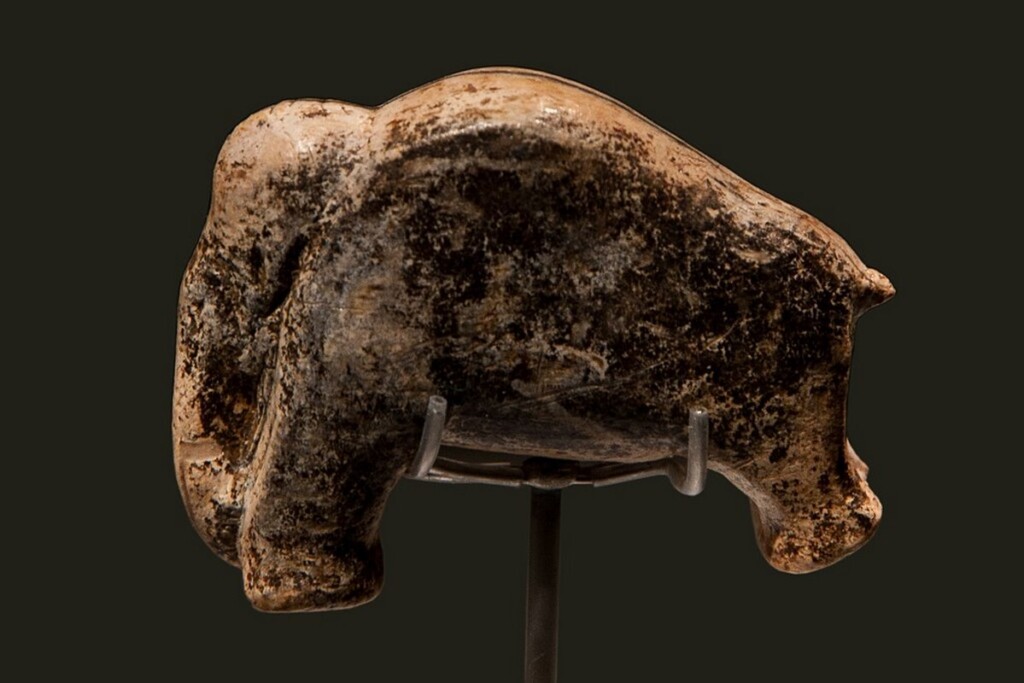
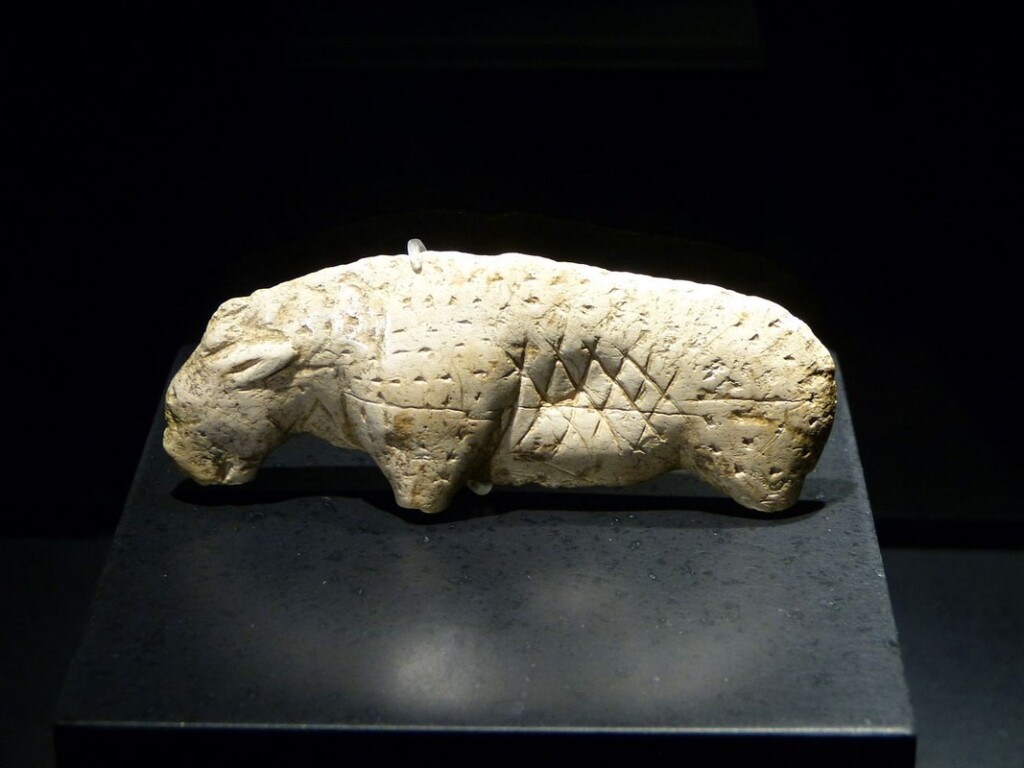
The mammoth and lion sculptures both bear a pattern of crisscrossing lines that might have been an attempt to render the appearance of fur, but other theories exist, suggesting they were instead markings that carried religious significance.
YOU MAY ALSO ENJOY: Egyptians Performed Brain Surgery 4,000 years ago: A Discovery Called a ‘Milestone in the History of Medicine’
Along with the figurines, fragments of small bones carved into flutes were recovered.
Aside from a site of the early arts, the cave has been determined to be a place where hunters brought hunted carcasses for the hours-long process of butchering them with stone implements.
IN THE DAWN OF CREATIVITY: 24,000-Year-Old Cave Art Suddenly Found in Well-Known Paleolithic Cave Shelter in Spain
Among the large assemblage of animal bones in Vogelherd Cave, reindeer and horse remains were the most common, indicating that Aurignacian groups hunted and ate these animals before all others, and in at least one of these instances, carved an image, perhaps in veneration of their quarry.
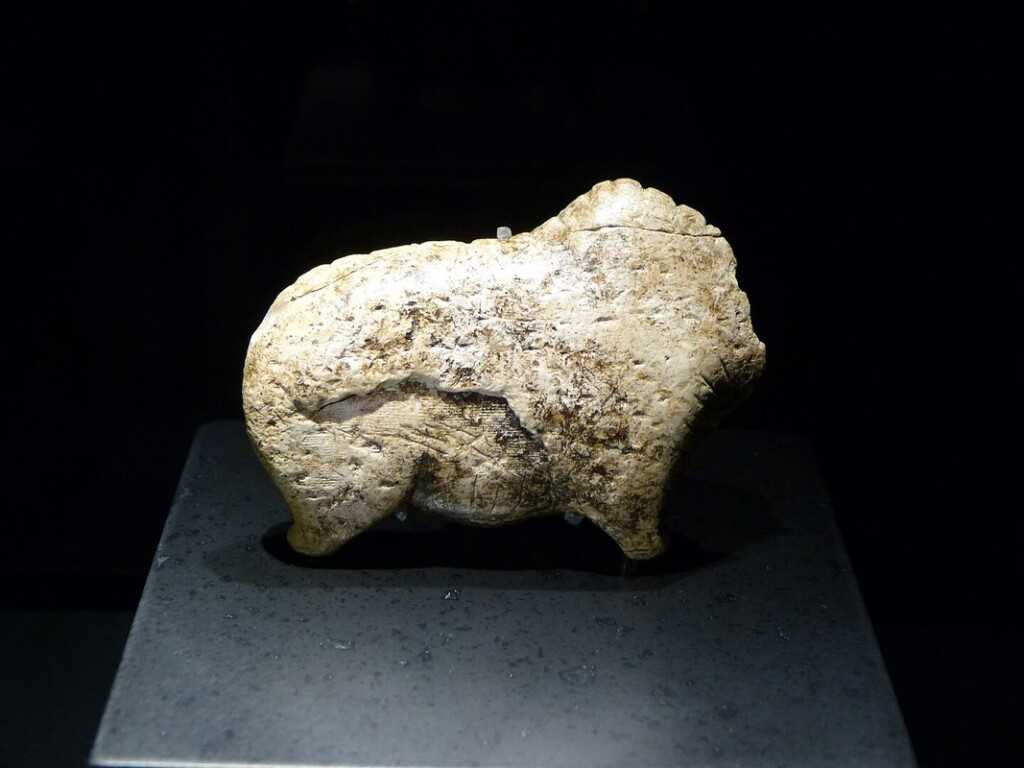
Auroch, red deer, wild boar, bison, and chamois remains are also documented but seem to have been secondary game, while the mammoth remains were almost certainly gathered from sites of natural death, and were not hunted by the Aurignacian.
In 2007, Vogelherd was designated as a World Heritage Site called Caves and Ice Age Art in the Swabian Jura which includes 5 other caves collectively known as the “cradle of art.”
SHARE This Story Of The Earliest-Known Artistry In Our Species…




















